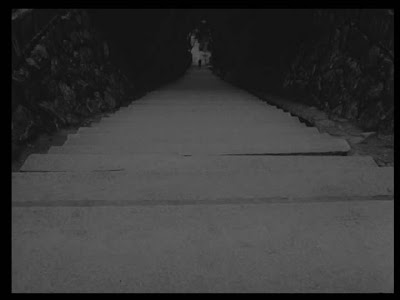 |
| From http://somewordsandplaces.files.wordpress.com/2010/04/mujo.jpg |
Dir. Akio Jissoji
Japan
 |
| From http://24.media.tumblr.com/tumblr_lsx9oqBoq41r0btqdo1_500.jpg |
A provocative little film if
there was any. A young man commits incest with his older sister, blossoming
into a full relationship that is discovered by a monk who knows the family
well. It is revealed over the nearly two and a half hour film however that the
man’s behaviour goes beyond this, weaving himself sexually and transgressively
with other people as he goes on with his goal to learn how to make Buddhist statues
from a master woodcarver, the reason behind his taboo acts more deeper than the
flesh. The main crux of the film is fascinating. It is very much a social
realist drama in its centre – of morality, of religion (specifically Buddhism
in Japanese culture), of sexuality and of individual isolation within human
society – but it does not fall into the trap of what is stereotyped as an issue
film. Tackling a very spiritual issue by its end in such a controversial way,
it prefers to be restrained in its content, far in away more so than the
dramatic swoops of more well known films, only switching from this with the
more fantastical hallucinations the main male character has. You are not on his
side, but you do not hate him, the characters in the film very complicated and compliant
in the events that take place, including the ones that hurt them, both good and
bad. The monk in particular could be viewed as the moral compass of the film or
the most complacent and guilty party for not intervening in any of what takes
place. If sinlessness is the true virtue, it must be won by engaging with the
world then presuming to be higher than the sinner, as the sinner can be right
in how a sinless life can lead to no true reward but is still guilty in their
acts destroying others.
This Transient Life is also an exceptional example of
cinematography, stunning black and white photography, textured and rich, whether
scenes are set in brightly lit environments or choked by shadows. It is very
sensual and erotic, which compounded with some of the scenes being incest feels
like deliberate provocations to get the viewer to think for themselves on the
taboo. A surprising amount of Japanese art and pop culture tackles incest, for titillation
and for serious dissections of morality and human behaviour, This Transient Life very much breaking
down what morality is though a very confrontational protagonist who is himself,
along with everyone else, scrutinised and sort through by the unconventional
camerawork. Director Akio Jissoji has
no limit to how a camera should move or be angled at onscreen, shades of Michelangelo Antonioni in moments where
the camera leaves the people and tracks the geographic environment around them,
the manmade and nature, with numerous types of camera movement and placement
involved. Scenes take place shot in unconventional angles, and the camera moves
as if it’s a character by itself, anxious and as much viewing the environment
around the people onscreen, looming over them, as well as being as close to
them in every detail as it can, their most intimate moments, especially the
pleasures of sex in lingering images of naked skin, as significant in the
camera’s eyes as the temples and buildings of the place depicted. That this
director went on to make Ultraman
films as well as more of these abstract works makes his filmography even more
enticing rather than unexpected. The final results that make up This Transient Life are exceptional.
 |
| From http://wondersinthedark.files.wordpress.com/2010/08/mujo-3.jpg |

No comments:
Post a Comment